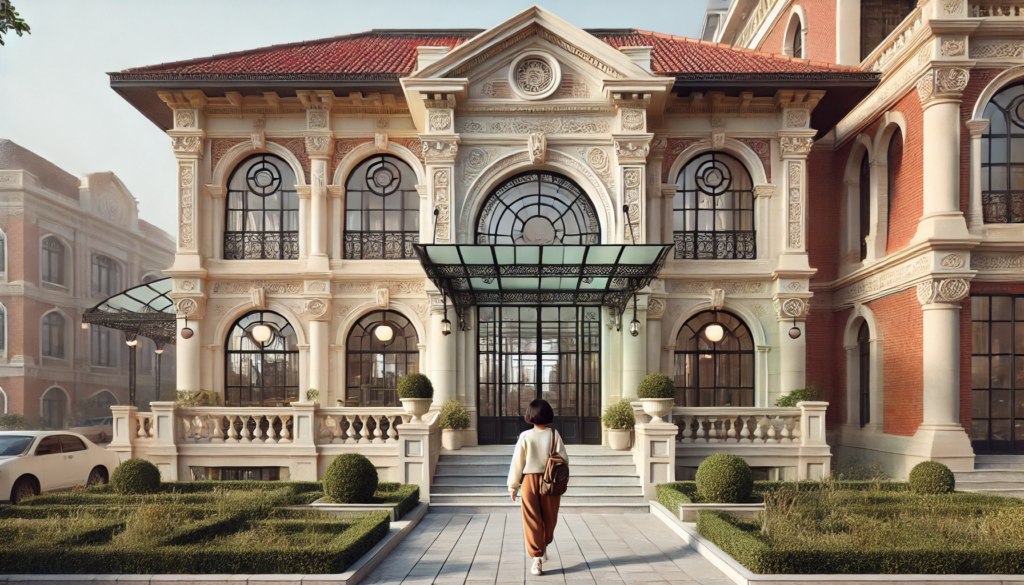ChatGPT:
Reims, located in the Grand Est region of northeastern France, is a city steeped in history, renowned for its role in French royalty, its Roman origins, and its association with Champagne production.
Origins and Roman Era
• Reims was originally founded by the Gauls as Durocortorum, the capital of the Remi tribe, which aligned itself with Julius Caesar during his conquest of Gaul in 51 BCE.
• After Roman rule was established, it became a major city in Gallia Belgica, flourishing as a center of trade and administration.
• It retained its Roman influence through structures like an amphitheater and aqueducts, remnants of which can still be traced today.
Medieval Period and the Coronation City
• Reims gained prominence in the early Christian era, becoming a major ecclesiastical center. Saint Remigius, the bishop of Reims, baptized Clovis I, the first King of the Franks, around 496 CE, marking the city’s symbolic role in the Christianization of France.
• This event led to Reims becoming the traditional site for the coronation of French kings, a practice that continued for nearly 1,000 years (from Louis the Pious in 816 to Charles X in 1825).
• Its Notre-Dame de Reims Cathedral, built between 1211 and 1275, was the site of most of these coronations and is today a UNESCO World Heritage Site. The cathedral is celebrated for its Gothic architecture and iconic sculptures, including the Smiling Angel statue.
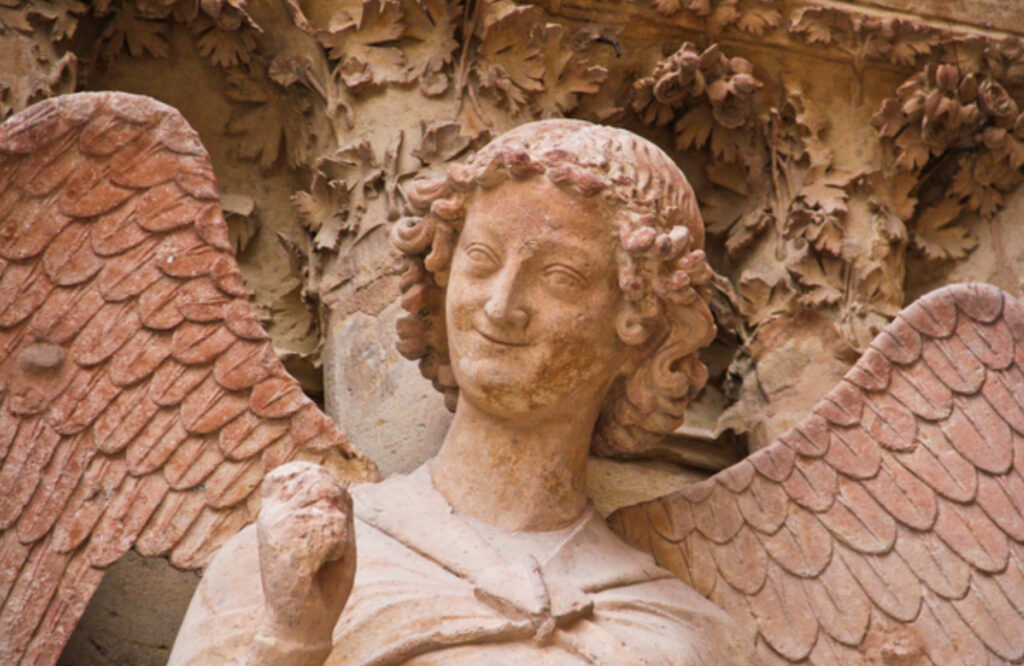
Modern History
• During World War I, Reims suffered extensive damage from German bombardments. The cathedral was severely damaged but later restored.
• Reims also played a key role in World War II. On May 7, 1945, the German Instrument of Surrender was signed at General Dwight D. Eisenhower’s headquarters in the city, effectively ending the war in Europe.
Development and Industry
• The post-war reconstruction saw the modernization of Reims while preserving its historical identity.
• It became the center of Champagne production, housing many prestigious champagne houses, including Veuve Clicquot and Taittinger.
• Today, it is a hub of tourism and viticulture, attracting visitors for its history, architecture, and sparkling wine heritage.
Cultural and Economic Significance
• Reims remains a cultural hotspot with museums, festivals, and gastronomy.
• Its economy benefits from tourism, champagne exports, and agriculture, blending ancient traditions with modern advancements.
Reims’ layered history, from Roman times to modern France, reflects its resilience and cultural richness, making it a key destination for history enthusiasts and Champagne lovers alike.
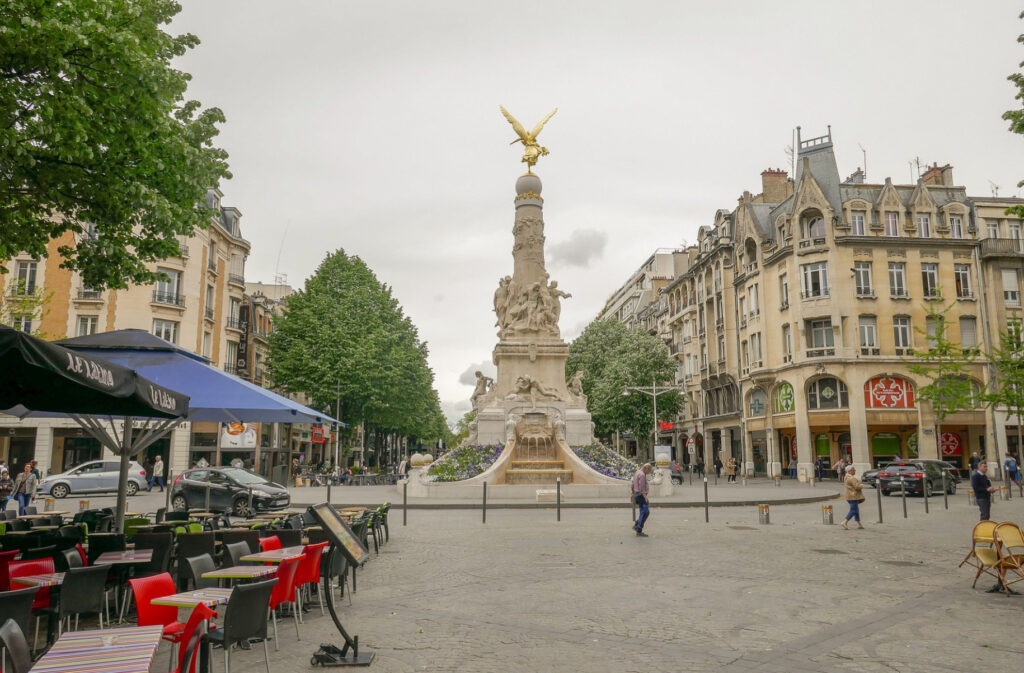
Reims became the traditional site for the coronation of French kings instead of Notre-Dame de Paris due to a combination of historical, religious, and symbolic factors deeply tied to the city’s role in the Christianization of France and its association with divine legitimacy. Here’s a detailed explanation:
1. Baptism of Clovis I – The Birth of Christian France (496 CE)
• The pivotal moment that solidified Reims’ status as the spiritual cradle of French monarchy was the baptism of Clovis I, the first Christian king of the Franks, by Saint Remigius (St. Remi), the Bishop of Reims, around 496 CE in the city.
• This event marked the conversion of the Franks to Christianity and established the French monarchy as a “Most Christian Kingdom” (Rex Christianissimus).
• Reims thus became associated with the divine blessing of kingship, making it the symbolic birthplace of Christian France and its religious legitimacy.
2. Religious and Symbolic Significance
• The coronation ceremony in Reims was deeply ritualistic and modeled after the sacred anointing of biblical kings like David and Solomon, emphasizing the king’s role as God’s chosen ruler.
• The Holy Ampulla (Sainte Ampoule), a vial said to contain miraculous oil brought by a dove from heaven during Clovis’ baptism, was preserved in Reims and used for the anointing of subsequent kings.
• This sacred oil symbolized a divine connection, reinforcing the monarchy’s spiritual authority.
3. Ecclesiastical Authority and Influence
• Reims was one of the most powerful archbishoprics in medieval France, granting its bishops significant influence over royal and religious matters.
• The Archbishop of Reims held the exclusive right to anoint and crown French kings, which further cemented the city’s status as the spiritual center of monarchy.
• The Notre-Dame Cathedral of Reims, built in the 13th century, was designed to reflect this royal and religious grandeur, specifically for coronation ceremonies.
4. Continuity and Tradition (Legitimacy and Stability)
• French monarchs sought to preserve legitimacy and maintain a sense of continuity by linking themselves to Clovis I and earlier kings.
• Reims provided an unbroken tradition of sacred coronations, which served as a public affirmation of divine approval.
• The use of Notre-Dame de Paris, while architecturally significant, lacked the spiritual and historical connection that Reims had to the origins of French Christianity.
5. Political and National Identity (Unity through Faith)
• By tying the monarchy to the Church in Reims, kings reinforced their position as protectors of Christianity in France, fostering national unity.
• The anointing ceremony in Reims projected an image of divine right, deterring challenges to the crown’s authority.
• It also emphasized the sacred bond between the monarchy and the Catholic Church, especially during times of political instability.
6. Why Not Paris’ Notre-Dame?
• Notre-Dame de Paris, built later (construction began in 1163 CE), served as the spiritual heart of Paris and the seat of the Archbishop of Paris, but it lacked the historical and religious significance tied to the baptism of Clovis.
• Paris was more associated with political governance than with the spiritual anointing required for coronations.
• While Notre-Dame de Paris was used for royal weddings, funerals, and other ceremonial events, the symbolism of divine legitimacy rooted in Reims’ history remained unchallenged for coronations.
7. Decline of Reims as Coronation Site
• The tradition continued for nearly 1,000 years, from Louis the Pious (816) to Charles X (1825).
• However, with the French Revolution (1789) and the rise of secularism, the practice of religious coronations faded, and Reims’ role as the spiritual center diminished.
• Napoleon Bonaparte, for example, chose Notre-Dame de Paris for his self-coronation in 1804, signaling a break from divine right monarchy toward secular authority.
Conclusion
Reims became the traditional site for French coronations due to its unique historical connection to the baptism of Clovis I, its possession of the Holy Ampulla, and its association with divine legitimacy through the Catholic Church. These factors gave it an unmatched symbolic and spiritual significance that Notre-Dame de Paris, despite its grandeur, could not replicate. This legacy of sacred kingship defined Reims as the spiritual birthplace of France’s monarchy for nearly a millennium.
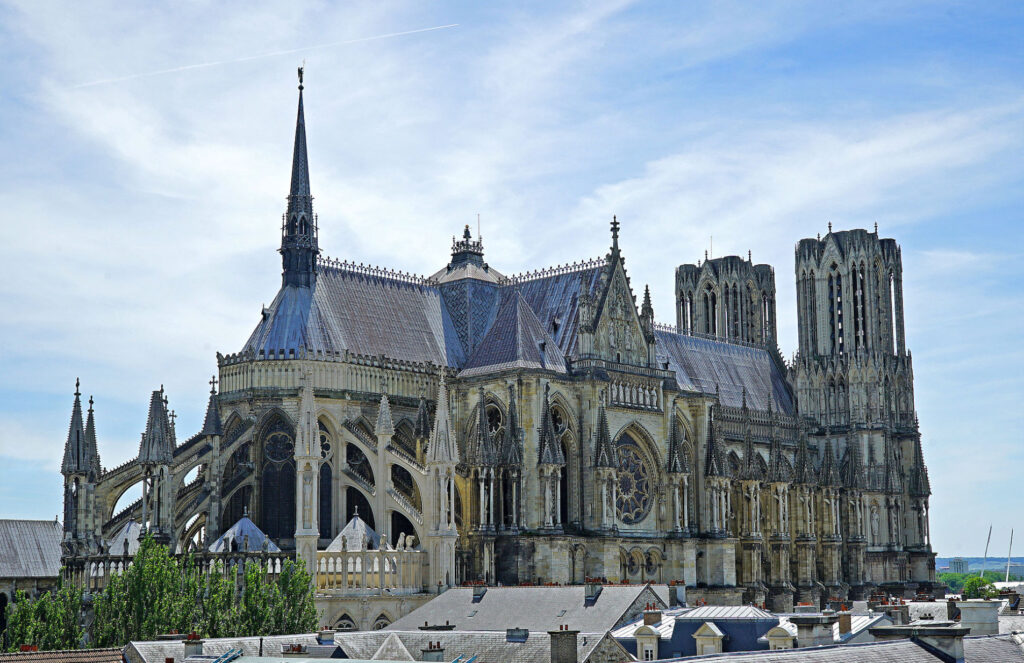
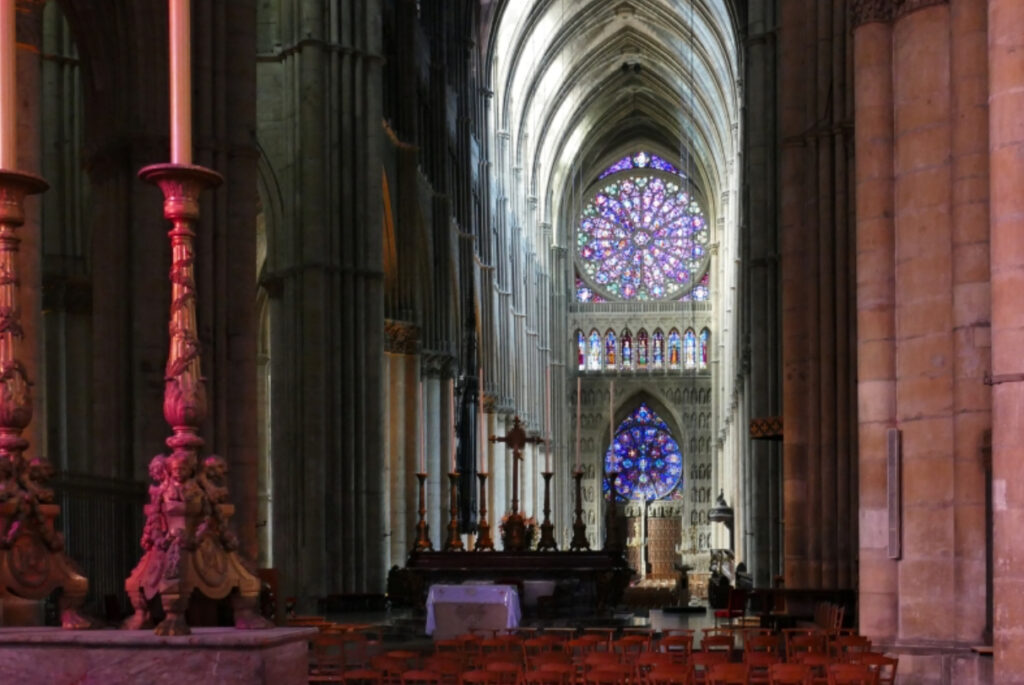
Here is a list of historical monuments and tourist attractions in Reims, France:
1. Notre-Dame de Reims Cathedral (Cathédrale Notre-Dame de Reims)
• UNESCO World Heritage Site and one of the finest examples of Gothic architecture in Europe.
• Site of the coronation of French kings for nearly 1,000 years.
• Famous for its stunning stained glass windows and sculptures, including the Smiling Angel (L’Ange au Sourire).
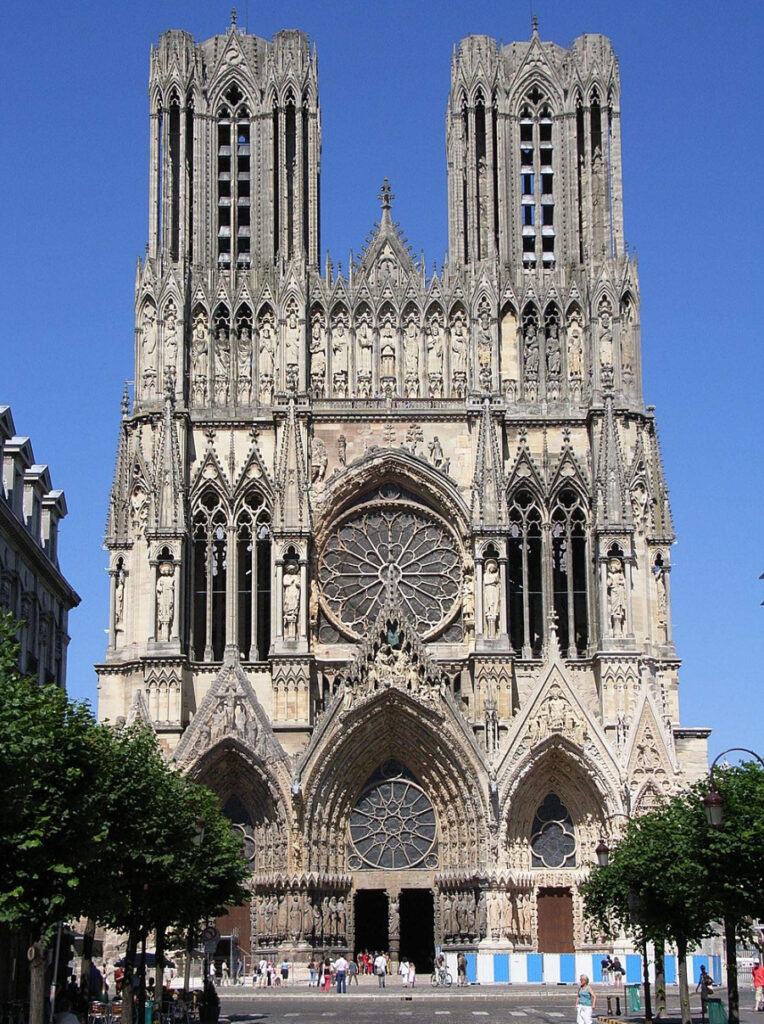
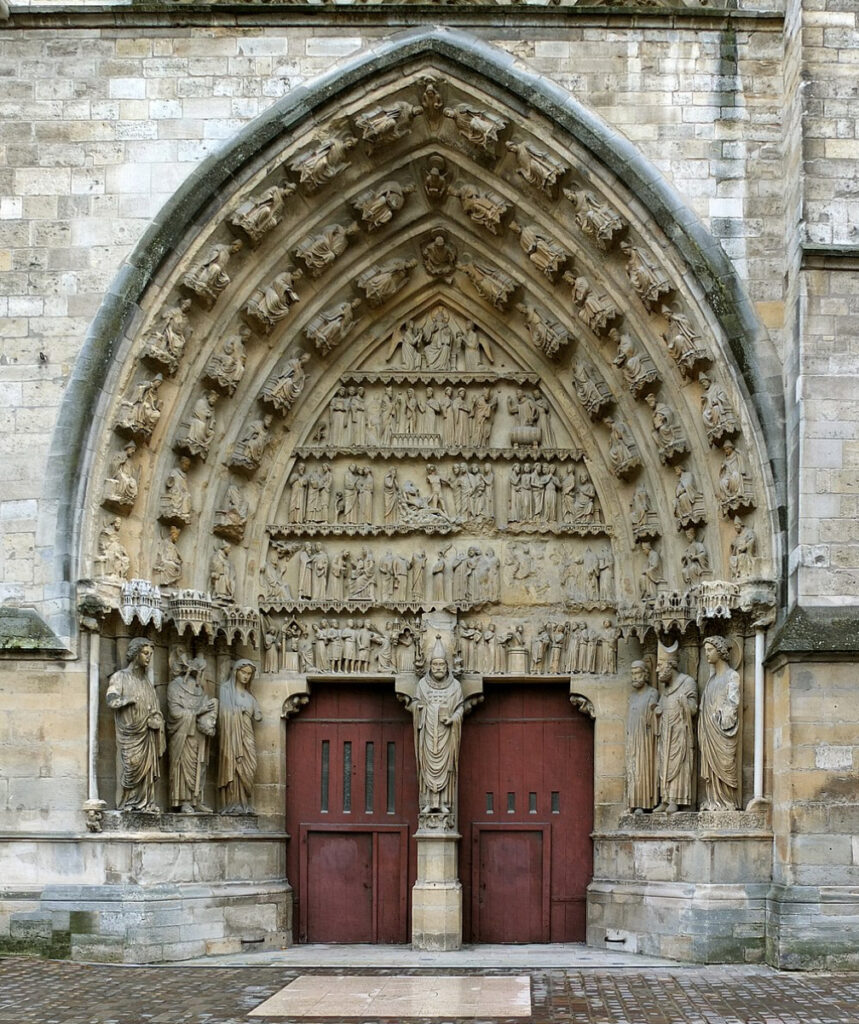
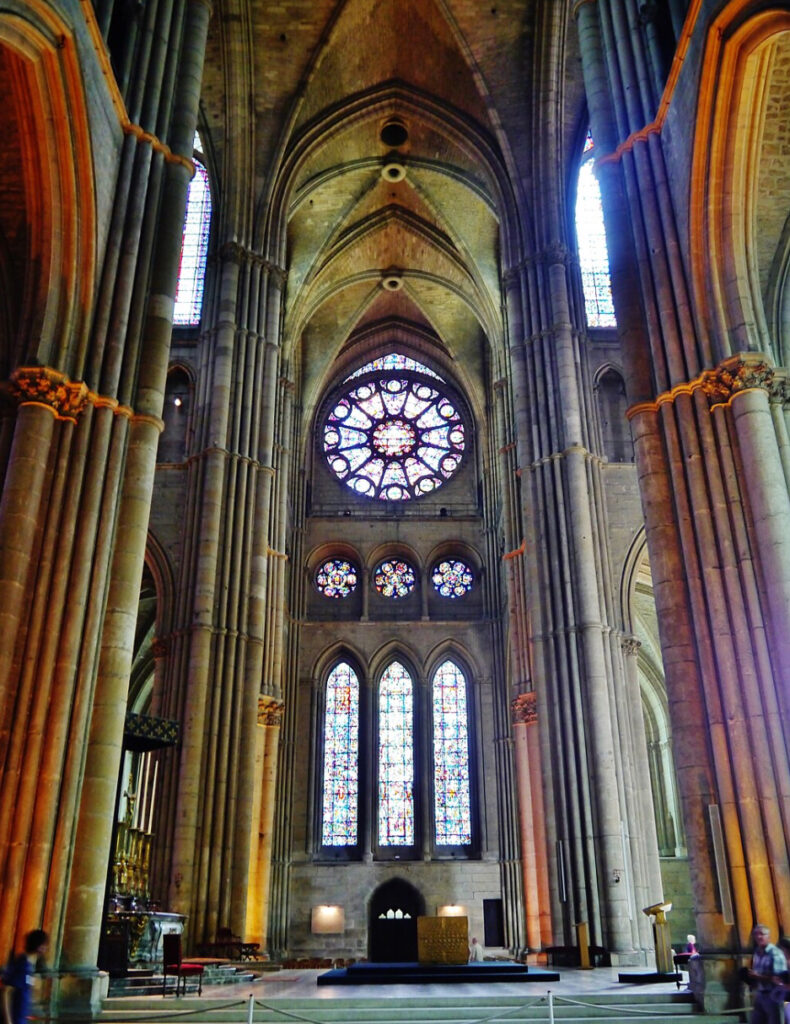
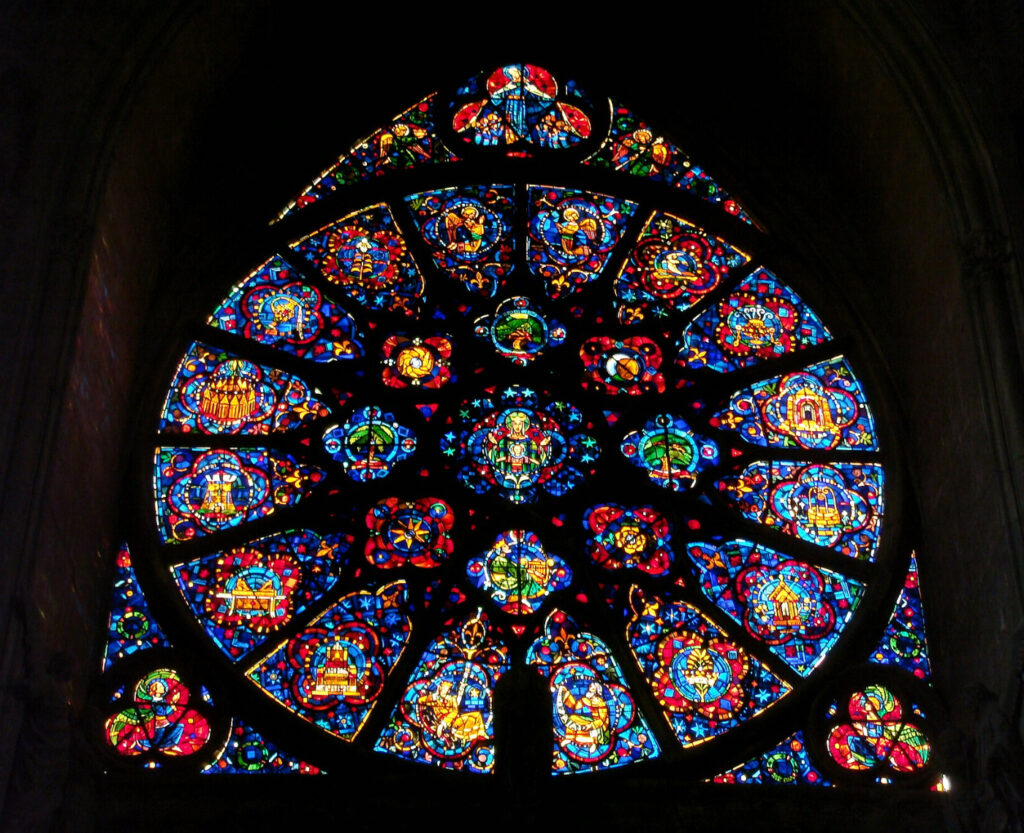
2. Palais du Tau
• Adjacent to the cathedral, this former archbishop’s palace is also a UNESCO site.
• Houses treasures from the cathedral, including royal coronation artifacts.
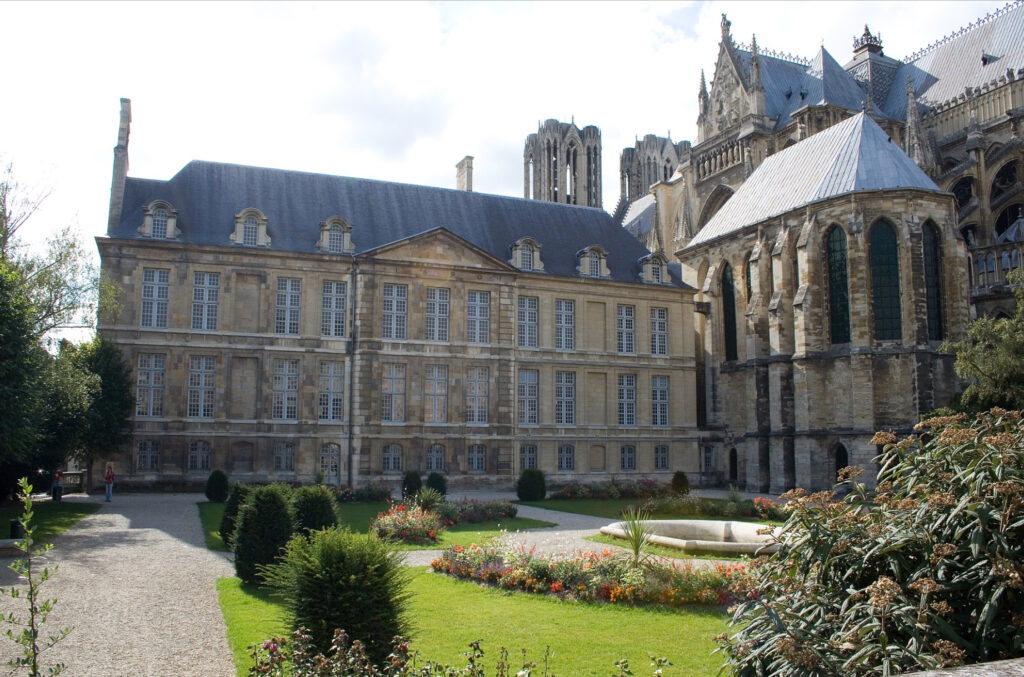
3. Saint-Remi Basilica (Basilique Saint-Remi)
• Another UNESCO World Heritage Site, dating back to the 11th century.
• Dedicated to Saint Remigius, who baptized Clovis I.
• Renowned for its Romanesque and Gothic architectural blend and an impressive organ.
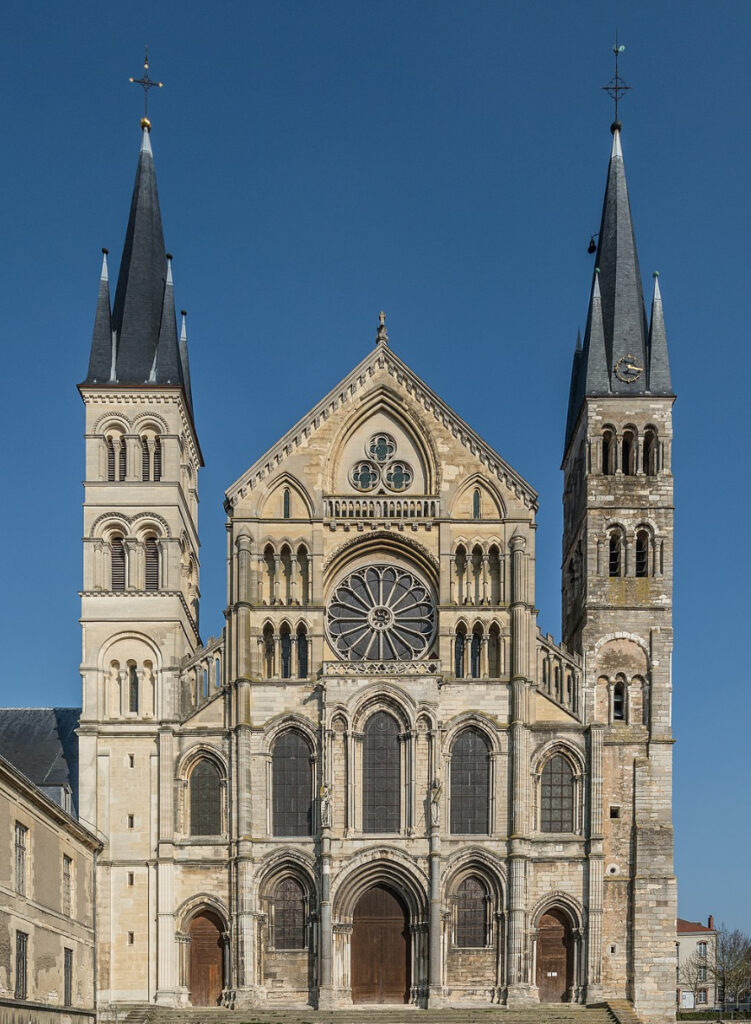
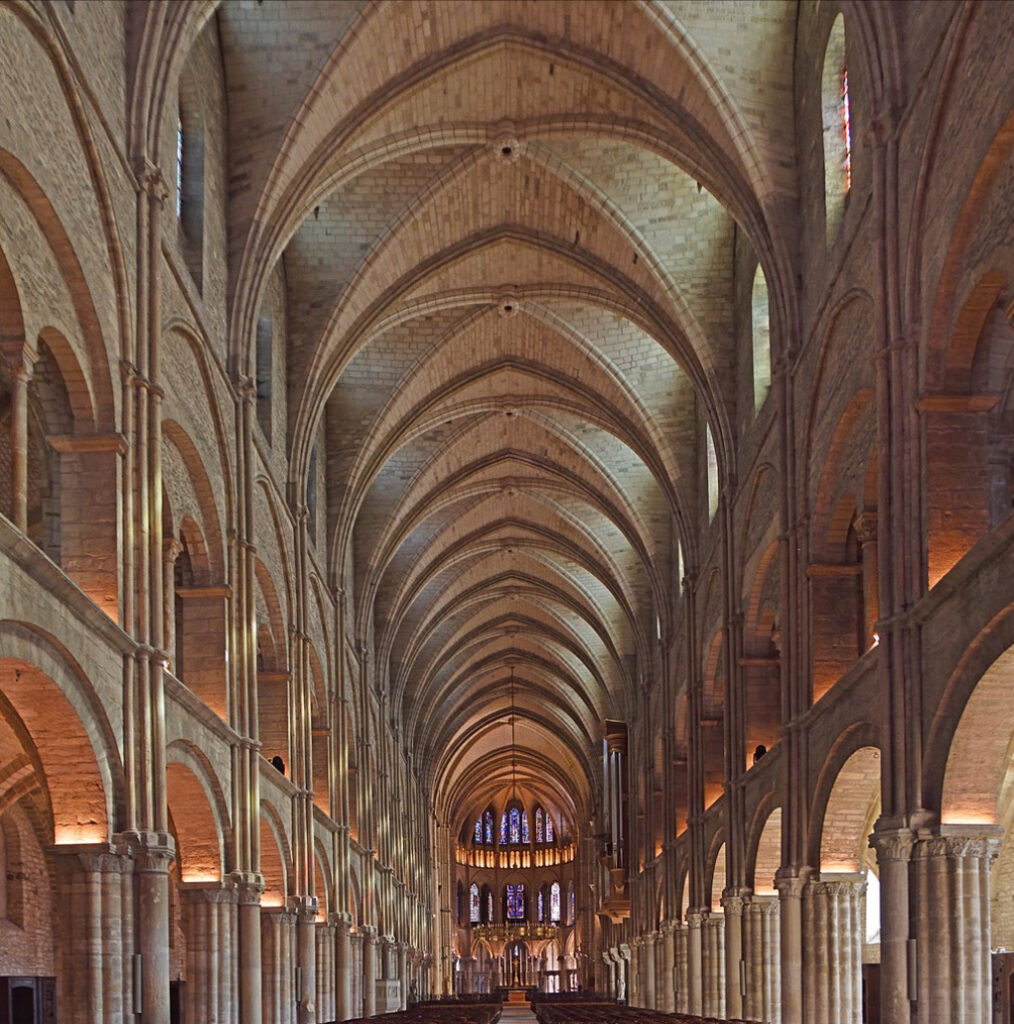
4. Musée Saint-Remi (Saint-Remi Museum)
• Located in the former Abbey of Saint-Remi.
• Displays collections of archaeology, military history, and artifacts from the city’s Roman past.
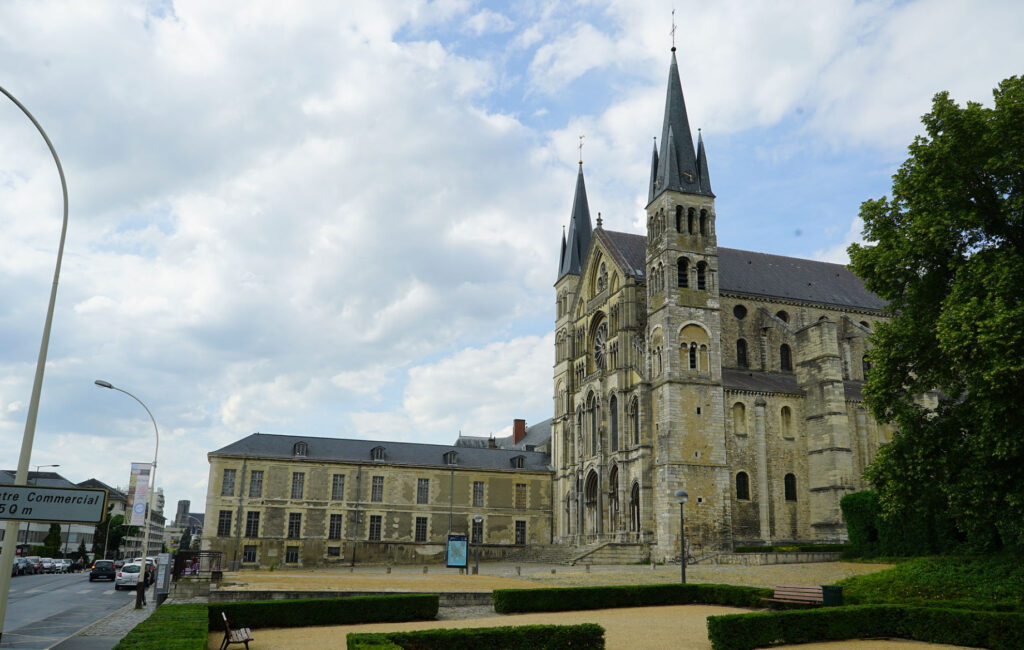
5. Porte de Mars
• A Roman triumphal arch dating from the 3rd century.
• Once part of the city walls, it is one of the largest surviving Roman arches in the world.
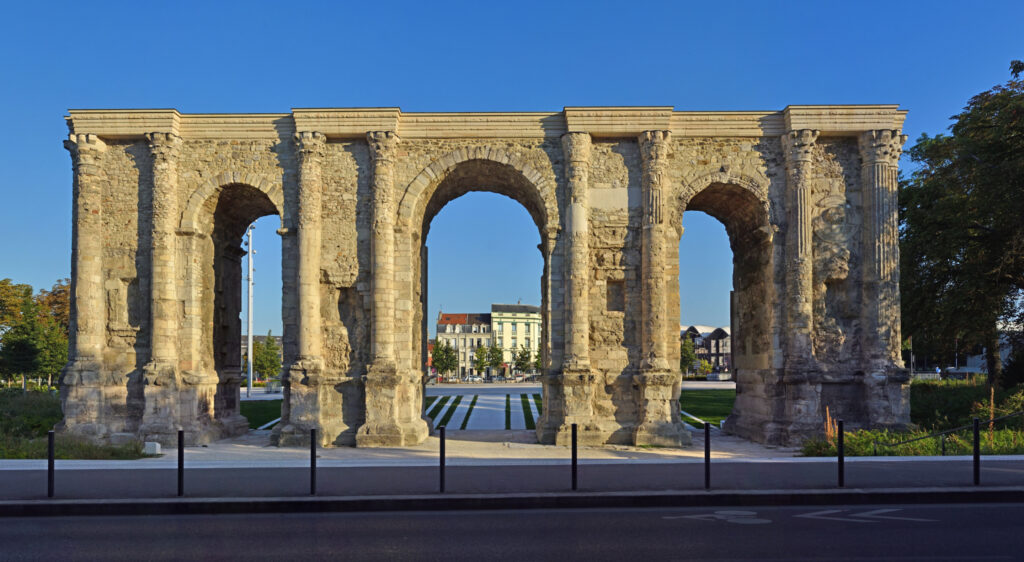
6. Carnegie Library (Bibliothèque Carnegie)
• Built in the Art Deco style after World War I.
• Houses a rich collection of rare books and manuscripts.
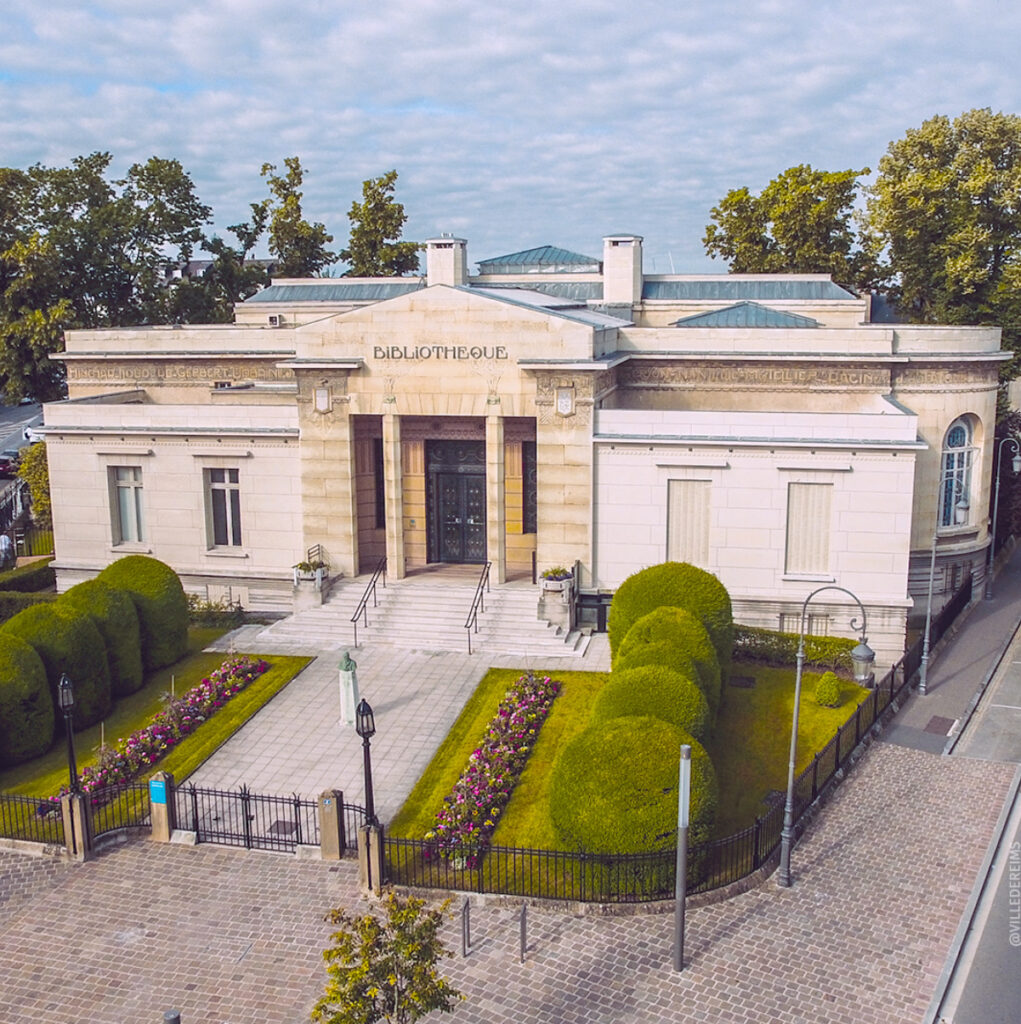
7. Champagne Houses and Cellars (UNESCO-listed champagne sites)
• Reims is the heart of Champagne production.
• Popular tours include:
• Taittinger Cellars – Located in ancient Roman chalk quarries.
• Veuve Clicquot Ponsardin – Famous for its historic wine cellars.
• Pommery – Features grand underground galleries and modern art displays.
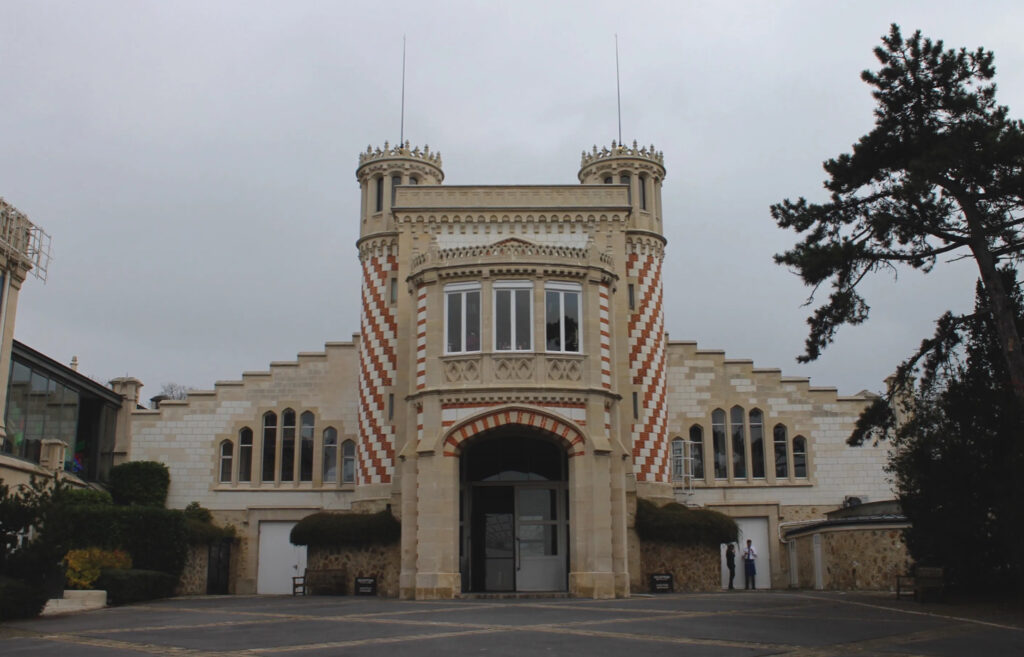
8. Musée des Beaux-Arts (Museum of Fine Arts)
• Displays paintings, sculptures, and decorative arts from the Renaissance to the 20th century.
• Includes works by artists such as Monet, Renoir, and Corot.
9. Place Royale
• A neoclassical square built in the 18th century, featuring a statue of Louis XV.
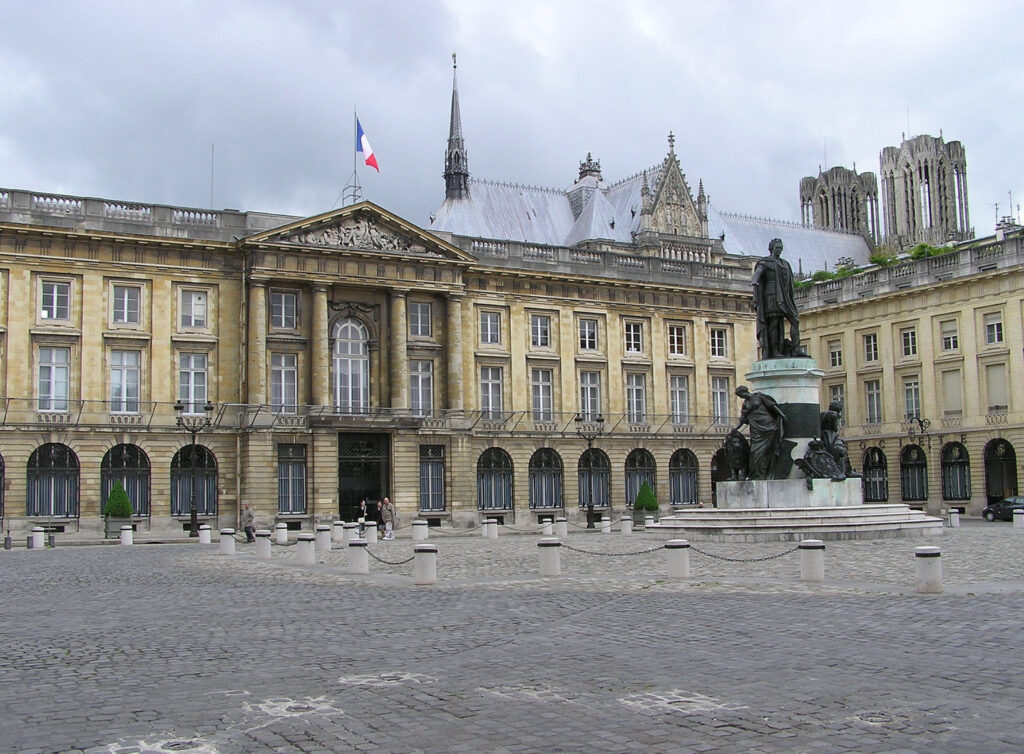
10. Place Drouet d’Erlon
• A lively square surrounded by cafés, restaurants, and shops.
• Ideal for dining and people-watching.
• Features the Fountain of Subé with its gilded angel.
11. Fort de la Pompelle
• A World War I fort that played a crucial role in defending Reims.
• Now a museum showcasing wartime artifacts, uniforms, and weaponry.
12. Hôtel de Ville (City Hall)
• Built in the 17th century, showcasing classical architecture.
• Its elegant façade makes it a prominent landmark.
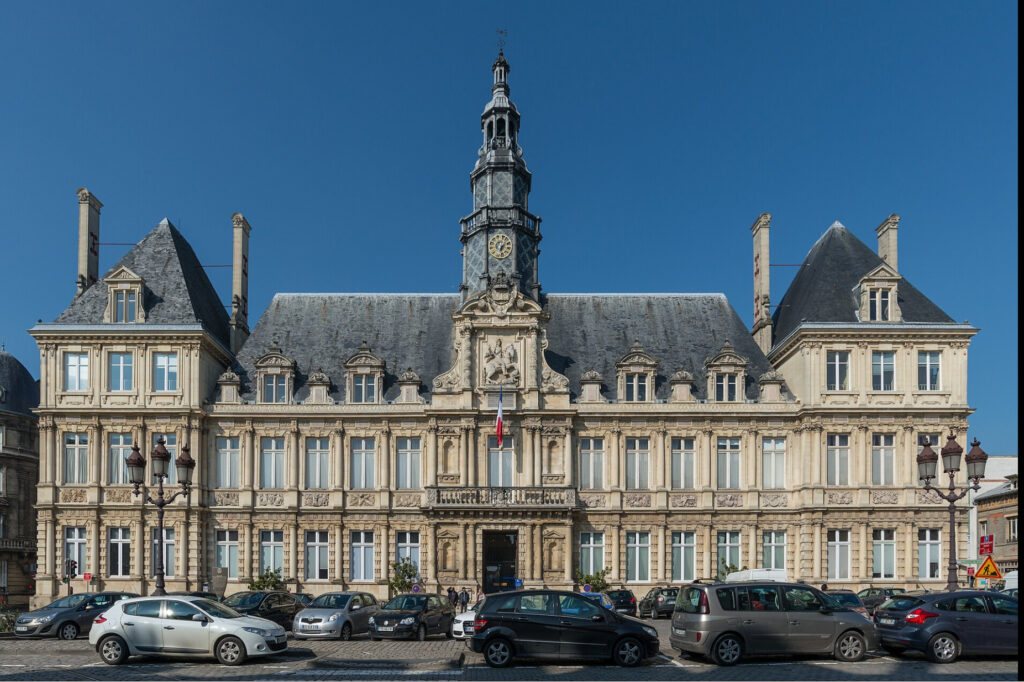
13. Cryptoporticus
• Remains of a Roman subterranean gallery, believed to have been part of the city’s forum.
• Offers insights into Reims’ Roman heritage.
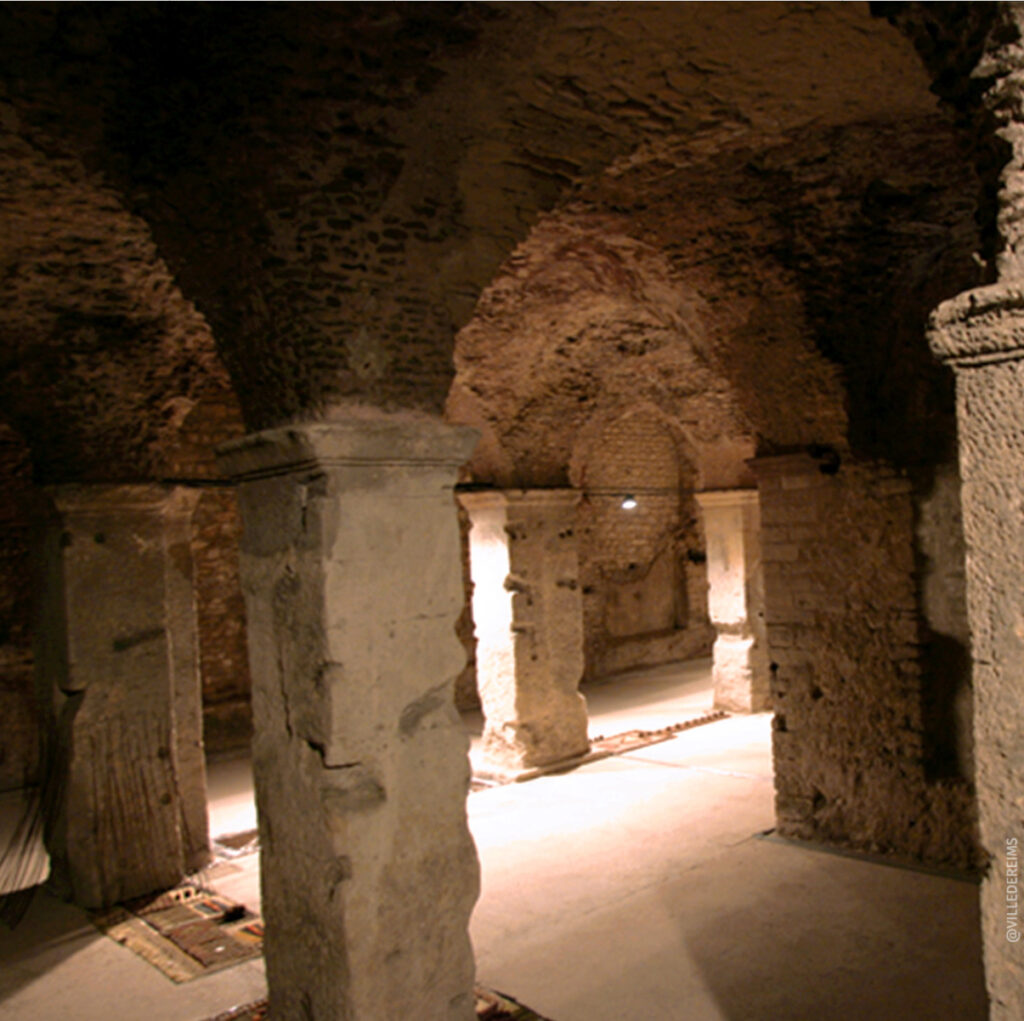
14. Parc de Champagne
• A large public park perfect for relaxation and walks.
• Features sculptures and picnic areas.
15. Chapelle Foujita (Foujita Chapel)
• A small chapel designed by Japanese artist Léonard Foujita in the Romanesque style.
• Decorated with unique frescoes and murals inspired by Christian and Japanese art.
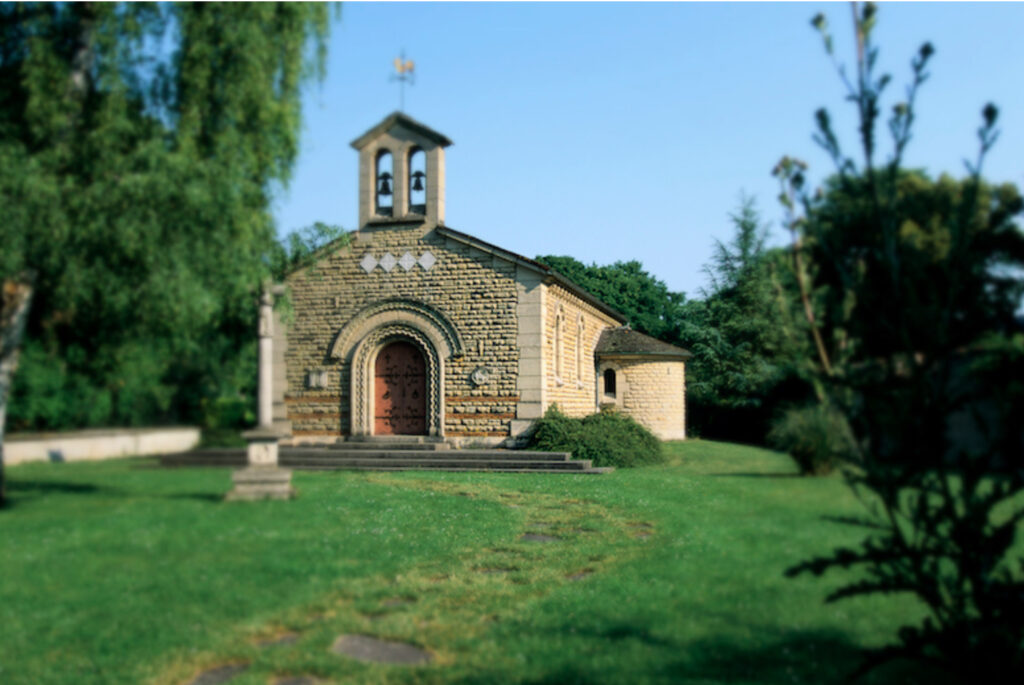
These landmarks highlight Reims’ rich blend of Roman, medieval, and modern history, making it a captivating destination for culture, art, and history enthusiasts.
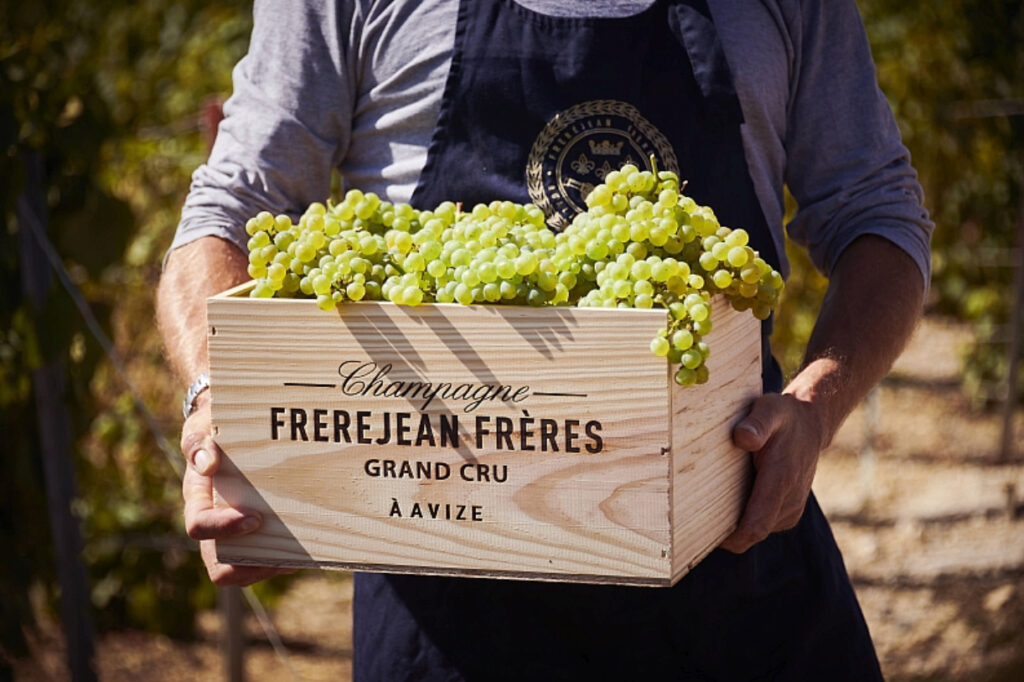
Two-Day Itinerary for Reims, France
This itinerary combines historical sites, champagne houses, and local culinary experiences with a stay in a unique accommodation.
Day 1: History and Architecture
Morning
1. Notre-Dame de Reims Cathedral (UNESCO Site)
• Start your visit at this Gothic masterpiece, famous for the coronations of French kings and stunning stained-glass windows.
• Highlights: The Smiling Angel statue and Chagall’s stained-glass windows.
• Tip: Arrive early to enjoy the peaceful atmosphere before crowds arrive.
2. Palais du Tau (UNESCO Site) (1–1.5 hours)
• Visit this former archbishop’s palace, housing royal coronation relics and medieval treasures.
Lunch (Local Specialty)
• Le Café du Palais – A charming Art Deco restaurant offering traditional dishes.
• Try Pâté en Croûte (pâté in pastry crust) or Jambon de Reims (cured ham).
Afternoon
3. Basilique Saint-Remi (UNESCO Site) (1 hour)
• Explore this Romanesque-Gothic basilica, dedicated to Saint Remigius, who baptized Clovis I.
• Don’t miss the tomb of Saint Remigius and the impressive organ.
4. Musée Saint-Remi (1 hour)
• Located in the former abbey, this museum features artifacts from Roman times to the Middle Ages.
5. Porte de Mars (Roman Heritage) (20 minutes)
• View this 3rd-century Roman triumphal arch, one of the largest surviving arches in the world.
Evening
• Dinner at Le Foch (Michelin-starred) – Savor modern French cuisine and pair it with Champagne.
• Recommendations: Foie gras terrine and Champagne-poached fish.
Overnight Stay (Unique Accommodation)
• Domaine Les Crayères – A luxury château hotel surrounded by gardens, offering an elegant, historic ambiance with Michelin-star dining.
Day 2: Champagne Experience and Local Culture
Morning
1. Taittinger Champagne House (Tour and Tasting – 1.5 hours)
• Explore Roman chalk cellars (crayères), a UNESCO site, used for aging Champagne.
• Taste their famous Comtes de Champagne.
• Tip: Book the tour in advance.
2. Veuve Clicquot Cellars (Optional – 1.5 hours)
• Discover one of the most iconic Champagne brands, known for its Yellow Label.
• Walk through ancient chalk quarries used for storage.
Lunch (Local Pairing with Champagne)*
• Brasserie Excelsior – Elegant Art Nouveau décor with classic dishes like Coq au Champagne and Rillettes de Reims.
Afternoon
3. Musée des Beaux-Arts (1 hour)
• View collections of Renaissance paintings, sculptures, and works by Monet and Renoir.
4. Chapelle Foujita (30 minutes)
• Visit this small chapel with murals by Japanese artist Léonard Foujita, blending Christian and Japanese art.
5. Place Drouet d’Erlon (Relax and Explore – 1 hour)
• Stroll through this lively square filled with cafés and boutiques.
Evening
• Dinner at Au Bon Manger – Known for pairing local charcuterie and cheeses with Champagne from small producers.
• Recommendations: Langres cheese and Champagne Brut Nature.
Final Notes
• Local Treats: Don’t miss Biscuits Roses de Reims (pink biscuits), traditionally dipped in Champagne.
• Souvenirs: Bring back bottles of Champagne and regional mustard from specialty shops.
• Timing Tip: Most Champagne house tours require advance reservations, so plan accordingly.
This itinerary blends history, culture, and culinary delights, providing a memorable experience of Reims’ rich heritage and Champagne-making traditions.
